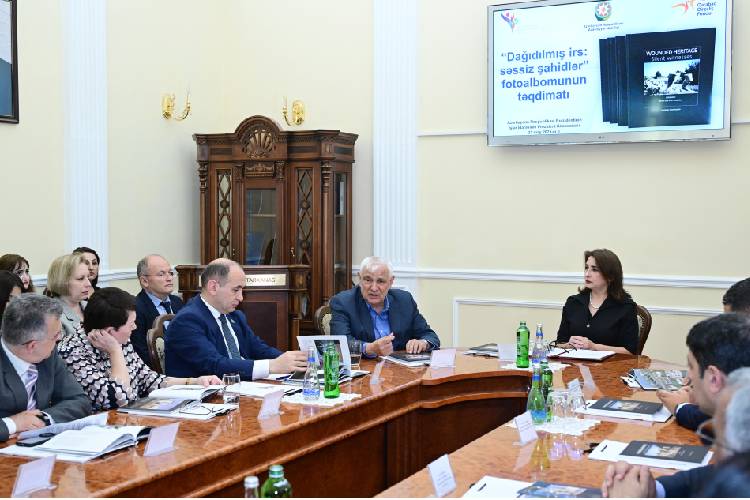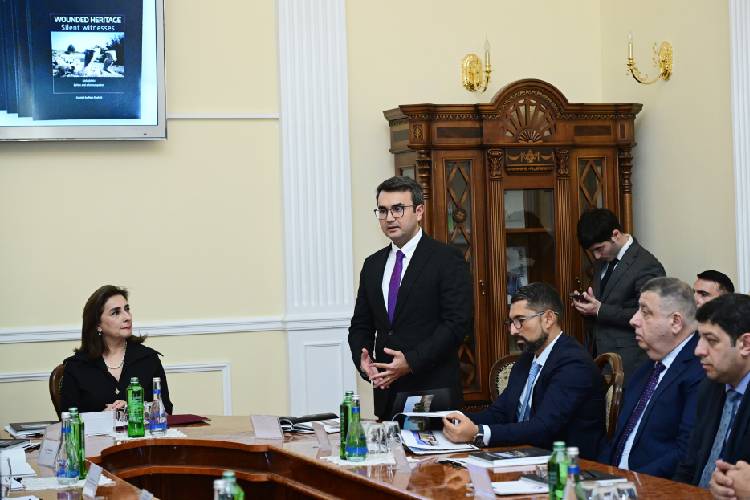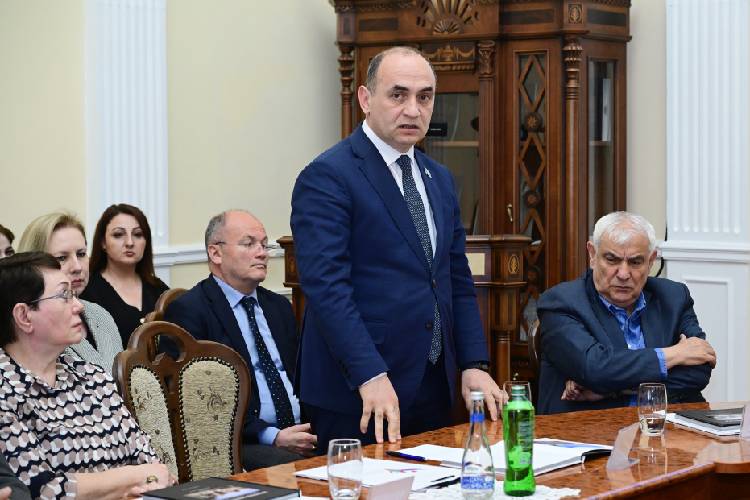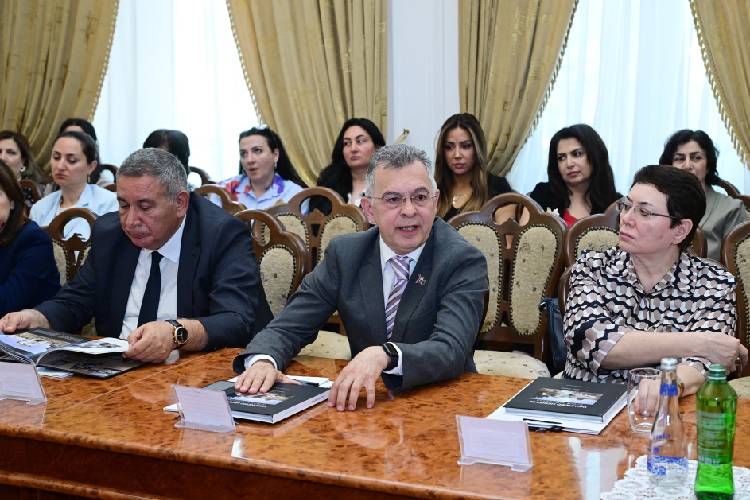The Presidential Library hosted the presentation of the photo album “Wounded Heritage: Silent Witnesses”
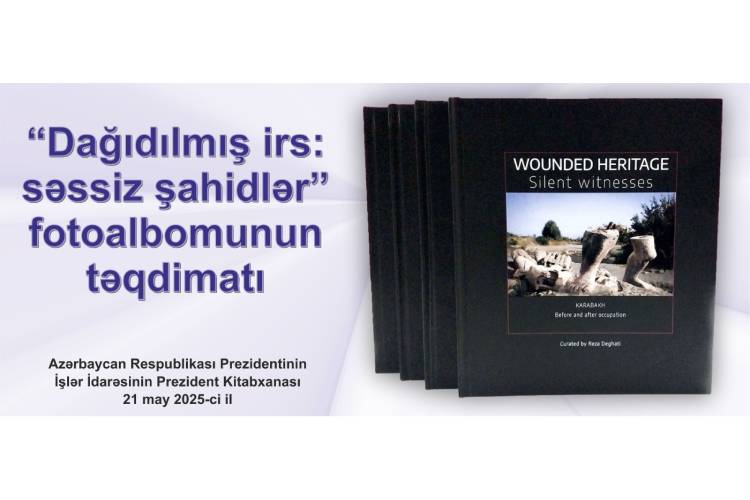
On May 21, 2025, the photo album “Wounded Heritage: Silent Witnesses” was presented at the Presidential Library of the Administrative Department of the President of the Republic of Azerbaijan. The photo album is a joint project of the Baku International Centre of Multiculturalism (BICM), the Ministry of Culture and the Karabakh Revival Fund (KRF).
The event officially opened with the National Anthem of the Republic of Azerbaijan playing. Following this, a moment of silence was observed in deep respect to honor the cherished memory of our martyrs who sacrificed their lives for the freedom and territorial integrity of our homeland. Subsequently, Professor Afet Abbasova, the director of the Presidential Library, delivered the opening speech, welcoming the participants and providing information about the event’s significance.
Chairman of the BICM Board of Trustees, academician Kamal Abdullah noted that the photo album contains a large number of facts confirming the destruction of religious and cultural heritage in the territories of Azerbaijan liberated from occupation and plays an important role in creating a complete picture of what happened during the 30-year occupation. He emphasized that the publication has great importance not only as a documentary source, but also as the preservation of historical memory.
BICM Executive Director Ravan Hasanov noted that the photo album sheds light on the numerous acts of vandalism and destruction to which Azerbaijan’s cultural heritage was subjected during the occupation of Karabakh and Eastern Zangezur by Armenia. The publication, aimed primarily at foreign audiences, presents photographs showing the state of cultural heritage sites before and after the occupation, located in the territory of Karabakh, which are silent witnesses of history and were destroyed and desecrated.
Chairman of the Board of the Karabakh Revival Fund Rahman Hajiyev said that over the years, not only infrastructure but also our cultural and religious heritage has been systematically destroyed in the liberated territories of Azerbaijan. The photo album “Wounded Heritage: Silent Witnesses” is an important project documenting the facts of destruction of cultural and religious monuments in the territories of Azerbaijan liberated from occupation.
Orhan Fikretoghlu, Advisor to the Minister of Culture, said that every work carried out for the preservation of national memory is a success in this direction: “It is desirable that such projects be carried out on an ongoing basis. The Ministry of Culture is always ready to support these projects”.
Speakers at the event, Elmira Akhundova - member of the BICM Board of Trustees, MP Jeyhun Mammadov, Farhad Guliyev - Director of the Institute of Archaeology and Anthropology, Rashad Mejid - Chairman of the Press Council, Fargan Abaszadeh - Senior Advisor of the Secretariat of the First Vice-President of the Republic of Azerbaijan, and Faig Ismayilov of the Institute of History and Ethnology emphasized the importance of documenting and informing the international community about the acts of vandalism committed against cultural, religious and historical heritage in the territories of Azerbaijan liberated from occupation.
Concluding the event held at the Presidential Library, Director Professor Afet Abbasova stated that documenting cultural monuments subjected to vandalism during the occupation and presenting them to the public in photo albums is a significant historical mission. This initiative reflects on the past and serves to preserve national memory and pass it on to future generations.
The Director pointed out that the Azerbaijani state is acting consistently and purposefully in this area. The restoration process is not limited to physical monuments; it also signifies the reinstatement of cultural justice and historical truth.
In her speech, Professor Afet Abbasova emphasized that Azerbaijan's cultural heritage is not limited to Karabakh. Western Azerbaijan is also an inseparable part of this historical and spiritual legacy. We aspire to preserve and sustain these regions' tangible and intangible cultural heritage. The most realistic and sustainable way to achieve this is by implementing the Return to Western Azerbaijan program.
We believe that shortly, our destroyed monuments in Western Azerbaijan will be restored, Azerbaijanis will return to their homeland, and our national memory will be revived in its natural space.


